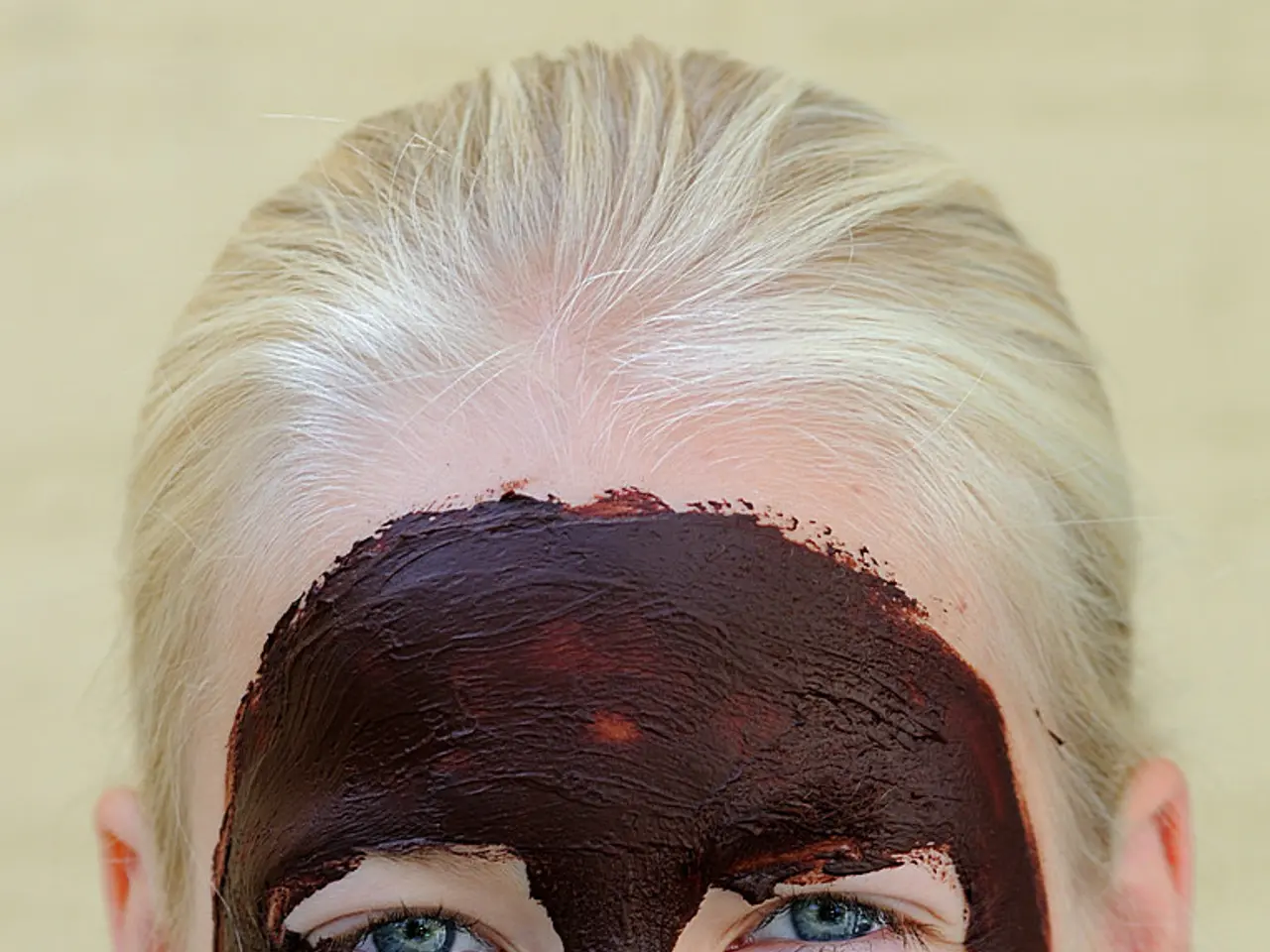Black Skin Melasma: Origins, Remedies, and Additional Information
Melasma, a common skin condition characterized by the development of dark patches on the face and other body parts exposed to sunlight, affects people worldwide. However, individuals with darker skin tones may experience more pronounced and persistent symptoms.
In a 2015 study, a combination cream containing hydroquinone and fluocinolone acetonide was found to be 64.60% effective in treating melasma in Chinese people, compared to 0.88% effectiveness of a placebo cream [1]. Despite this, melasma can be notoriously difficult to treat in all skin types, and those with darker complexions may face additional challenges due to the risk of post-inflammatory hyperpigmentation from treatments or skin irritation.
One key difference between melasma's impact on darker and lighter skin lies in the visibility and coloration of the patches. In darker skin, melasma patches often appear as very dark brown to black, contrasting strongly against the baseline skin tone [1]. In contrast, patches in lighter skin tend to be brown or grayish but less intensely dark, as melanin production is lower and melanin breaks down faster [2][3].
Another significant factor is the dynamics of melanin. Darker skin melanocytes produce more eumelanin (brown to black pigment), which is more stable and long-lasting in the skin layers. This means pigmentation disorders like melasma can be more persistent and harder to treat in darker skin [2][4]. On the other hand, lighter skin produces less melanin, with more pheomelanin (yellow to reddish pigment), and pigmentation tends to be more transient.
Treatment strategies for melasma in darker skin must be carefully designed to minimize irritation and target melanin production without worsening pigmentation. Topical creams and gels, such as hydroquinone, corticosteroids, retinoids, azelaic acid, glycolic acid, and kojic acid, may be effective [2]. However, hydroquinone, a prescription-only medication that lightens skin, can cause side effects such as dry skin, inflammation, a burning or tingling sensation, and blue-black discoloration [1].
Some studies suggest that oral medications and dietary supplements like beta carotene and procyanidin may be effective treatments for melasma [5]. Beta carotene is a red-orange pigment found in colorful fruits and vegetables, while procyanidin is a plant compound commonly found in berries and grapes.
The psychosocial impact of melasma can be particularly significant for individuals with darker skin due to the more prominent and longer-lasting patches. People with black or brown skin have more melanocytes and are more likely to develop melasma [6]. Despite melasma being a benign condition, individuals can experience a stronger cosmetic and psychological impact due to the darker, more visible patches.
In conclusion, while melasma occurs across all skin tones, its manifestation is often more prominent and persistent in people with darker skin due to the higher amount and stability of eumelanin. This leads to darker, more visible patches and requires careful treatment strategies tailored to prevent further pigmentation issues. Preventive measures include wearing sunscreen daily, avoiding direct sun exposure, using gentle skincare products, and managing any underlying health conditions.
- Ankylosing spondylitis, a type of arthritis that primarily affects the spine, is less common in women and people with darker skin tones.
- The predictive science of mental health studies shows a higher prevalence of bipolar disorder in individuals with lighter skin, according to various health-and-wellness reports.
- Skin care products labeled for multiple skin types, including those with atopic dermatitis, often miss the specific needs of those with psoriasis, a skin condition characterized by red, scaly patches.
- Lung cancer is the leading cause of death among women with diabetes, according to the American Cancer Society, highlighting the importance of early detection and regular health screenings for women's health.
- A study on the association between skin care practices and multiple sclerosis (MS) found a higher prevalence of psoriasis in individuals with MS, indicating a potential role for the skin microbiome in MS onset.
- The AQ (Allergy Quotient) test, used to determine atopic sensitivity, may be less accurate for individuals with darker skin due to the test's reliance on cutaneous reactions.
- The health and wellness industry is increasingly focusing on developing skincare products for people with skin conditions like melasma, psoriasis, and eczema, recognizing the need for more diverse skin-care options.
- In the field of health-and-wellness, there is a growing interest in the connection between mental health and skin health, with dermatologists noting a correlation between stress and skin conditions like psoriasis and acne.
- Spondylitis, inflammation of the spine, can lead to stiffness, pain, and even spinal fusion, and it is more prevalent among people of the Caucasian race and those with a familial history of the condition.
- According to a study on the prevalence of skin conditions among African American women, both atopic dermatitis and psoriasis were more common in this demographic compared to Caucasian women, emphasizing the need for better representation in skincare research and development.
- Dead Sea salt, known for its skincare benefits, is being researched for its potential role in treating skin conditions like psoriasis and eczema, offering hope for those with persistent and treatment-resistant symptoms.
- Type 2 diabetes, a chronic condition characterized by high blood sugar levels, can increase the risk of developing various skin conditions, such as skin tags, fungal infections, and bacterial infections.




